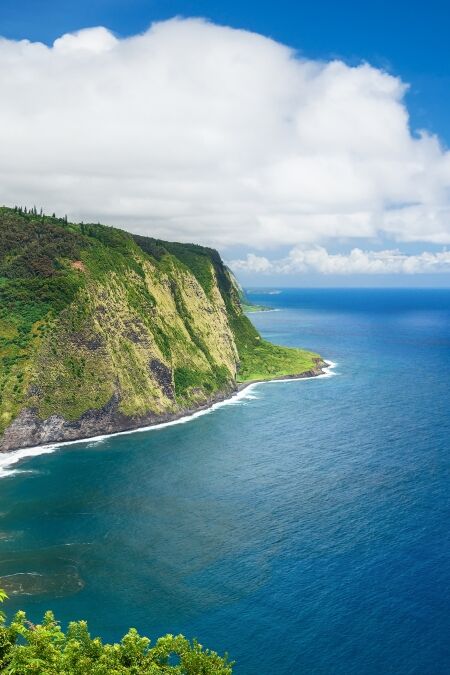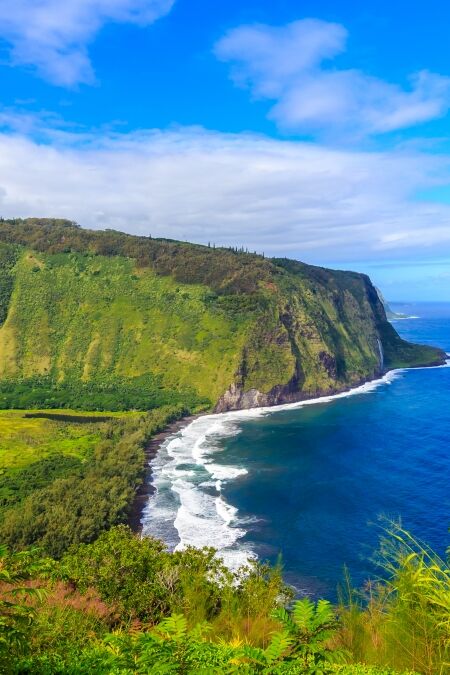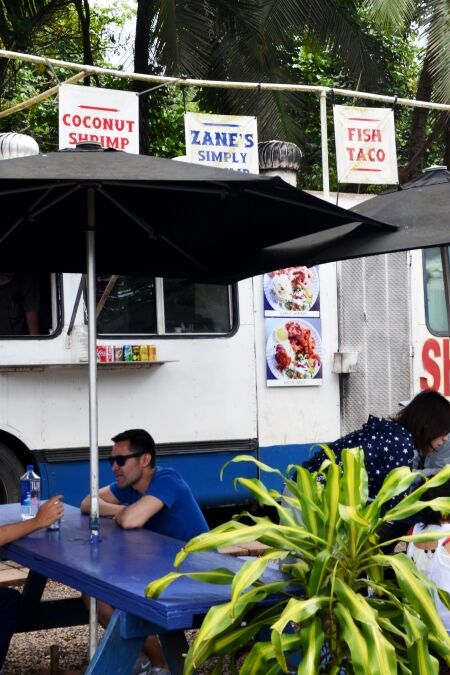On the northern coast of Hawaii’s Big Island, Pololu Valley Lookout offers breathtaking views of lush cliffs, verdant valleys, and the striking black sand beach below. This scenic spot is a favorite among tourists for its unparalleled natural beauty and the tranquil escape it provides from the island’s busier attractions. In this travel guide, we’ll explore everything you need to know about visiting Pololu Valley Lookout, including how to get there, the best times to visit, and the various activities and attractions that make this destination a must-see.
Highlights
- Experience panoramic vistas of lush valleys, rugged cliffs, and the stunning Pacific Ocean from the lookout point.
- Take the Pololu Trail down to the black sand beach at the valley floor. The hike is about 0.6 miles each way, offering an immersive nature experience with the reward of a secluded beach.
- The contrast of the green cliffs, black sand, and blue ocean provides countless photo opportunities.
- Pololu Valley is less crowded, offering a serene environment to unwind and connect with nature.
- Keep an eye out for native birds and other wildlife.
History
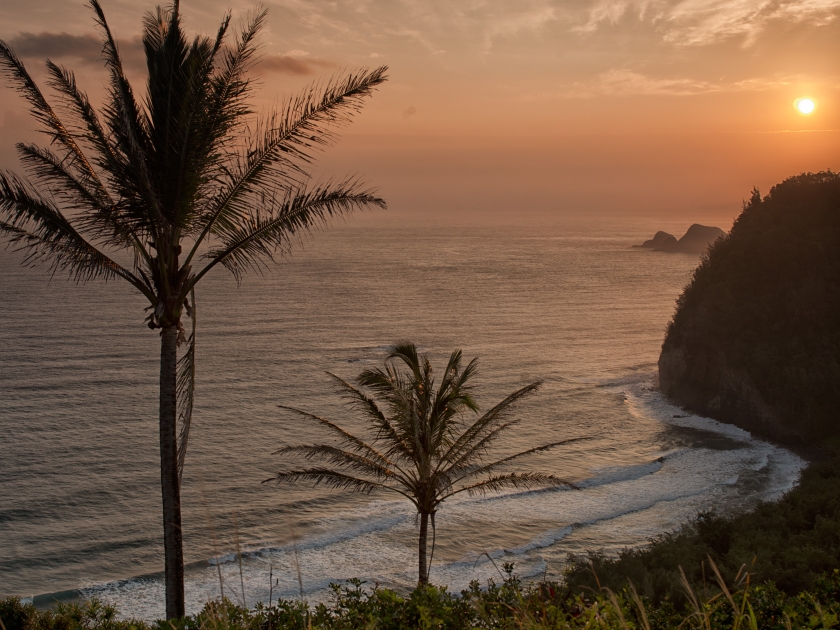
The specific history of Pololu Valley Lookout itself is somewhat elusive, with limited information available regarding the establishment of the official lookout point. However, understanding the broader history of Pololu Valley provides valuable context.
Native Hawaiian Cultivation
Before European contact, Pololu Valley was renowned for its kalo (taro) farming. The valley was particularly known for a unique crimson-stemmed variety called kalo Pololū. This agricultural activity was a staple of the local Native Hawaiian community and continued into the 1800s when rice cultivation was also introduced.
20th Century Decline
In the 1900s, the valley saw a decline in regular agricultural use. The construction of the Kohala Ditch, which diverted water from a neighboring valley for sugarcane irrigation, further contributed to this decline. This shift in water usage marked a significant change in the valley’s economic landscape.
Rise of Tourism
In recent times, Pololu Valley and its lookout have gained popularity as a tourist destination on the Big Island of Hawaii. The area’s scenic beauty and the hiking opportunities it offers attract numerous visitors each year. The lookout, with its breathtaking view of the valley and coastline, has become a natural stopping point for those exploring the region. Today, it stands as a testament to the valley’s enduring appeal, providing a stunning vantage point for all who visit.
Attractions and Things to Do
Hiking the Pololu Valley Trail
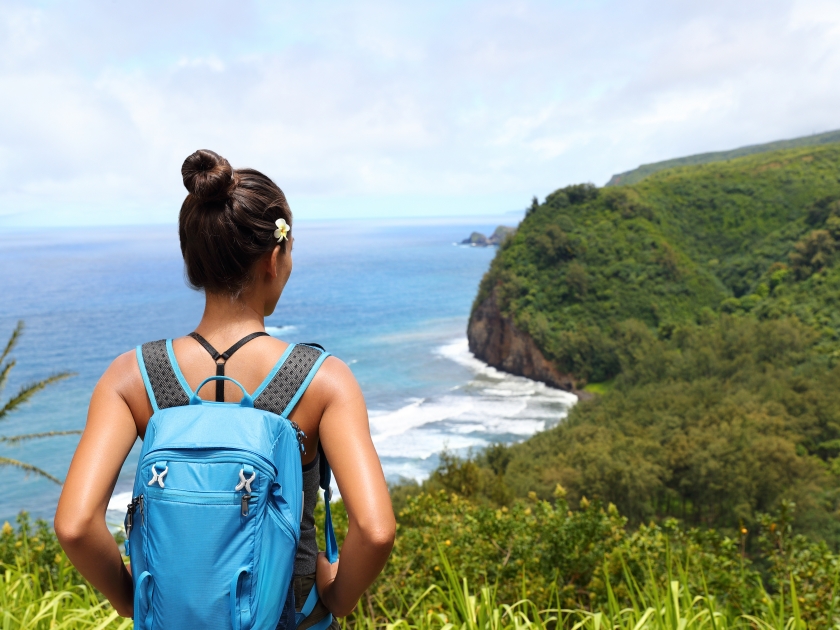
Trail Difficulty and Length:
The Pololu Valley Trail is a moderately challenging hike that stretches about a mile down to the valley floor, with steep and uneven terrain. Hikers should be prepared for a bit of a workout, but the effort is well worth it for the stunning views along the way.
Scenic Viewpoints and Photo Opportunities:
As you descend the trail, you’ll encounter several scenic viewpoints perfect for capturing the valley’s dramatic landscape. The lookout points provide sweeping vistas of the coastline, making them ideal for photography enthusiasts eager to capture the beauty of Hawaii’s natural scenery.
Exploring the Black Sand Beach
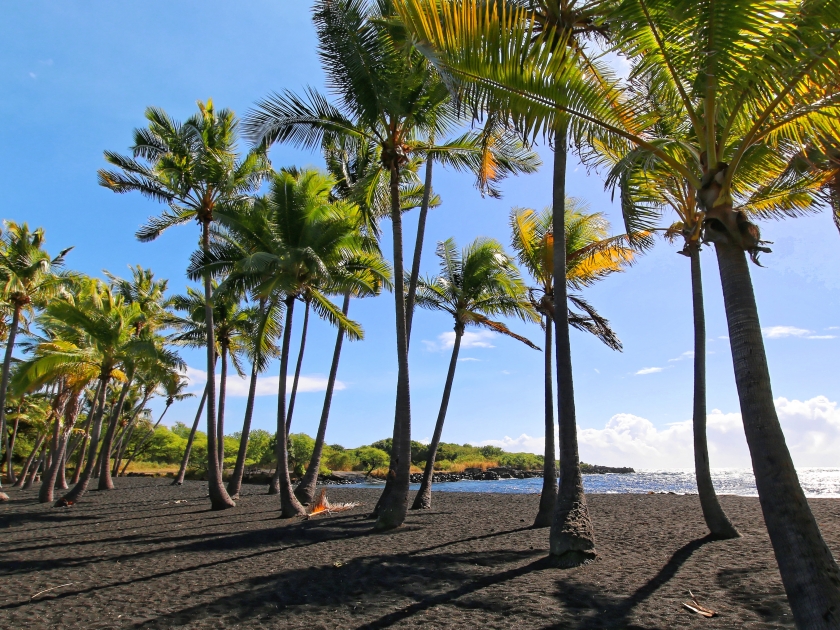
Beach Activities (Swimming, Sunbathing, Picnicking):
Once you reach the valley floor, you’ll be greeted by the striking Pololu Valley Black Sand Beach. Here, visitors can enjoy a range of activities, including swimming in the gentle waves, sunbathing on the unique sand, and picnicking amidst the picturesque surroundings.
Safety Tips for Visitors:
While the beach is inviting, it’s essential to be cautious of strong currents and waves. Swimming is best suited for calm days, and visitors should always stay aware of ocean conditions. Bringing along sunscreen, water, and snacks is also advisable to ensure a comfortable and safe visit.
Flora and Fauna
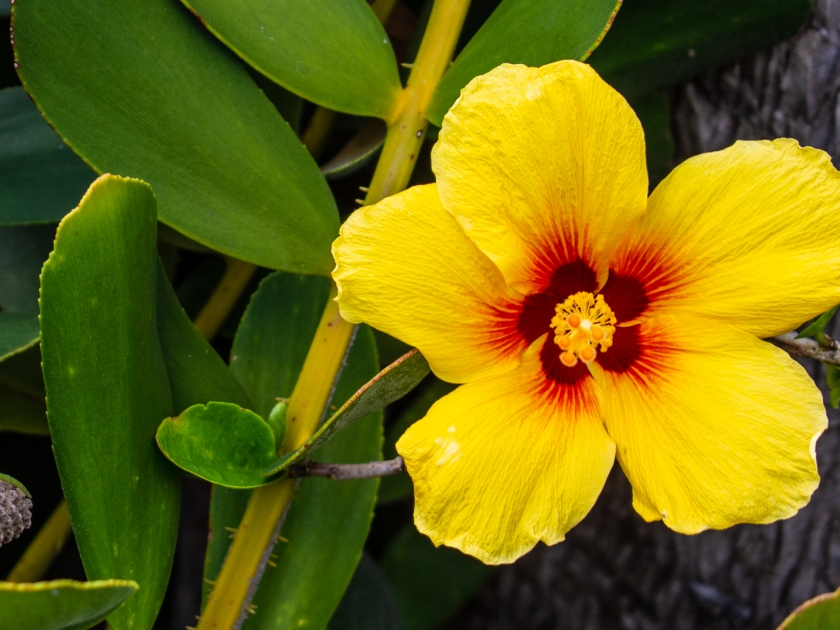
Native Plants and Wildlife to Look Out For:
Pololu Valley is home to a diverse array of native plants and wildlife. Visitors can spot vibrant tropical flowers, lush ferns, and unique bird species, making the valley a paradise for nature lovers and bird watchers alike.
Conservation Efforts:
Efforts are underway to preserve the valley’s natural beauty and biodiversity. Visitors are encouraged to respect the environment by staying on designated paths, not disturbing wildlife, and carrying out any trash to help maintain this pristine area for future generations.
Tips for Visiting
- Wear Appropriate Footwear: Sturdy hiking shoes or boots are recommended for navigating the steep and uneven trail.
- Pack Essentials: Bring plenty of water, snacks, sunscreen, and insect repellent to stay hydrated, nourished, and protected.
- Check the Weather: Before heading out, check the weather forecast to avoid hiking in rainy or overly windy conditions.
- Start Early: Arrive early in the day to avoid crowds and enjoy cooler temperatures during your hike.
- Respect the Environment: Stay on designated trails, do not litter, and avoid disturbing wildlife to help preserve the natural beauty of the area.
- Bring a Camera: Capture stunning views and memorable moments with a camera or smartphone.
- Safety First: Be cautious of slippery or muddy sections of the trail, and keep an eye on ocean conditions if planning to swim.
- Limited Facilities: Be aware that there are no restrooms or facilities at the lookout or along the trail, so plan accordingly.
- Be Prepared for Limited Cell Service: Cell phone reception may be spotty, so let someone know your plans before you go.
- Leave No Trace: Pack out everything you bring in to keep the area pristine for future visitors.
Best Times to Visit
The best times to visit Pololu Valley Lookout are during the early morning or late afternoon when the temperatures are cooler and the lighting is perfect for photography. The valley is particularly stunning in the spring and fall when the weather is mild, and the landscape is lush and vibrant. Avoiding the midday heat not only makes for a more comfortable hike but also offers a more serene experience with fewer crowds.
Nearby Attractions
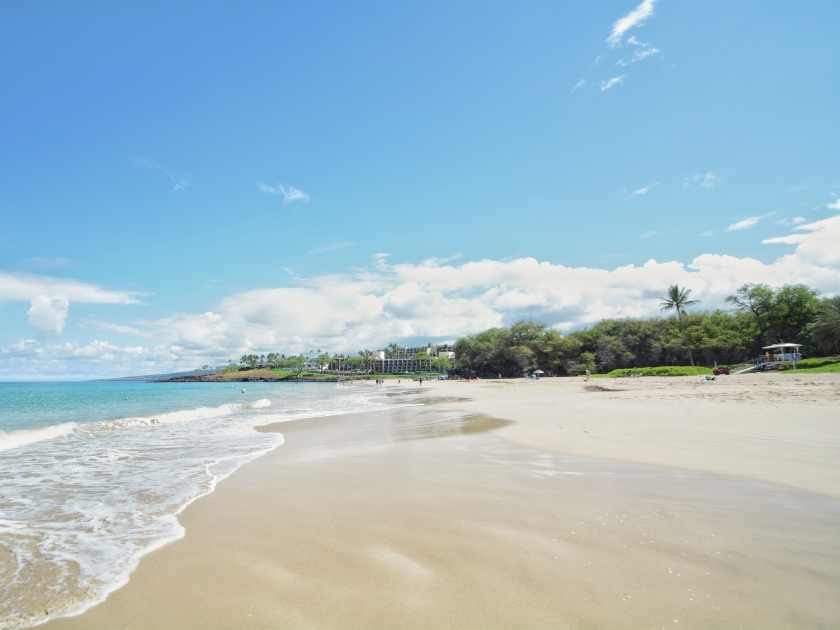
After exploring Pololu Valley Lookout, consider visiting the nearby attractions along the Kohala Coast, where you can relax on pristine beaches such as Hapuna Beach and Mauna Kea Beach. Discover the charm of historic towns like Hawi and Kapaau, known for their vibrant art galleries, local shops, and the King Kamehameha Statue. For more adventure, try additional hiking trails such as the Mookini Heiau State Monument and the Puukohola Heiau National Historic Site, offering rich historical insights and stunning natural beauty.
Where to Stay
For a comfortable and convenient stay near Pololu Valley Lookout, consider the Kohala Village Inn, a charming and affordable option in the heart of Hawi, offering cozy rooms and a friendly atmosphere. For those seeking more space and a unique experience, the Kohala Lodge – Vacation Rental House provides a rustic yet luxurious setting with stunning views and modern amenities. Whether you prefer a budget-friendly inn or a spacious vacation rental, there are accommodations to suit every preference.
Dining and Refreshments
When it comes to dining, visitors can enjoy a variety of options near Pololu Valley. Fresh Off the Grid offers delicious, locally sourced meals perfect for fueling your adventures, while Kings View Cafe in Kapaau provides a relaxed setting with tasty island fare and refreshing drinks. Don’t miss out on trying local specialties like fresh poke, Hawaiian plate lunches, and tropical fruit smoothies. For a scenic meal, pack a picnic and enjoy it at one of the many picturesque spots along the valley and coast.
Frequently Asked Questions (FAQs)
Pololu Valley Lookout is a scenic viewpoint located on the Big Island of Hawaii, offering breathtaking views of the lush Pololu Valley and its black sand beach.
Yes, the Pololu Valley Trail starts at the lookout and descends to the valley floor, offering a moderately challenging hike with stunning vistas.
Swimming at Pololu Valley Beach is not recommended due to strong currents and rough surf, but it is a beautiful spot for exploring and photography.
The best times to visit Pololu Valley Lookout are early morning or late afternoon to avoid crowds and enjoy the best lighting for photography.
There is limited parking available at Pololu Valley Lookout, so it’s advisable to arrive early, especially on weekends and holidays.
Pololu Valley Lookout has no restrooms or other facilities, so plan accordingly and bring water and snacks for your visit.
How to Get There
By Car
Start from the town of Hawi, which is the nearest major town to Pololu Valley. Head east on Highway 270 (Akoni Pule Highway). Continue on Highway 270 for approximately 8 miles (13 kilometers). The road will end at the Pololu Valley Lookout parking area. There are limited parking spaces, so it is advisable to arrive early.
By Bus
From the Kona side, take the Hele-On Bus to the town of Hawi. In Hawi, transfer to the North Kohala Transit Shuttle, which services the Highway 270 corridor. Alight at the final stop near Pololu Valley Road. From there, you will need to walk the remaining distance to the Pololu Valley Lookout, as the shuttle does not go all the way to the lookout. The walk is approximately 2 miles (3.2 kilometers) and involves some uneven terrain.
Pololu Valley Lookout is a Must-visit Destination!
This natural wonder invites you to explore its lush landscapes and respect the pristine environment. Capture and share your memorable experiences on social media, inspiring others to discover the magic of Pololu Valley. Join the community of travelers who cherish this hidden gem and contribute to its preservation for future generations.


